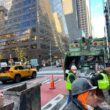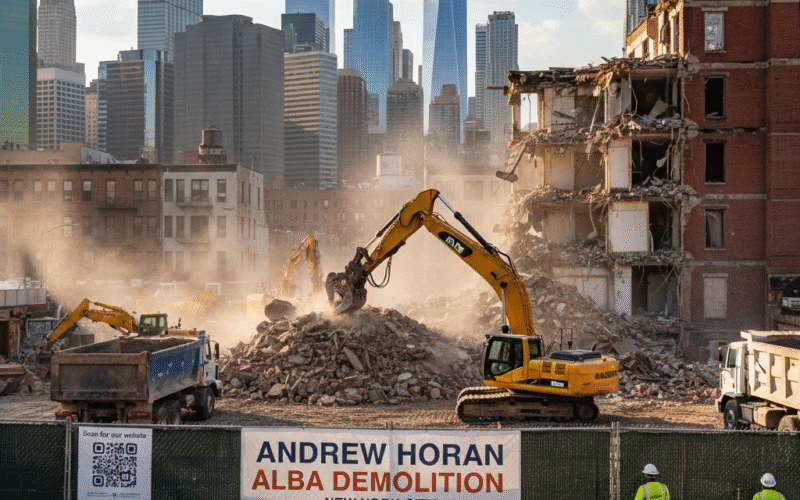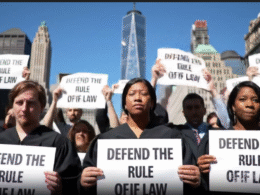In the ever-competitive demolition, carting, and environmental services industry in New York City, one name that has increasingly drawn attention—both positive and negative—is Andrew Horan Alba. In this deep dive, we’ll explore who Andrew Horan is, how Alba (often referred to as Alba Services) built its footprint, the serious controversies surrounding it, and the lessons that businesses (and regulators) might glean from its story.
Who Is Andrew Horan?
Andrew Horan is widely known as the founder and owner of Alba Services Inc., a conglomerate of companies active in demolition, asbestos remediation, carting, and related construction services. manhattanda.org+3LinkedIn+3THE ORG+3
According to a public filing in the Baselice Statement of Facts, he is identified as a co-owner of Alba, which operates primarily in the New York region. manhattanda.org+2LinkedIn+2
On the corporate side, Alba Services is run under several divisions: Alba Carting & Demolition, Alba Environmental, Arc Contracting, Caledonia Carting, and other sister entities. LinkedIn+3local79.org+3albademo.com+3
One organizational chart source lists Andrew Horan as President of Alba Services Inc. THE ORG
Thus, when you see “Andrew Horan Alba” in searches or discussions, it typically refers to the person (Horan) and his flagship enterprise (Alba Services) as one combined brand.
Alba Services: The Growth Story
From modest beginnings, Alba expanded through aggressive bidding, subcontracting, and diversifying into multiple branches of demolition, environmental, and carting services. A blog on UpdateJungle traces part of this growth narrative. updatejungle.com
Over time, Alba positioned itself as a go-to vendor for real estate developers, general contractors, and municipal contracts in New York. The company claimed expertise in:
- Residential and commercial structure demolition
- Asbestos abatement
- Site remediation
- Carting and waste management
- Environmental consulting
Alba also maintained a blog (on its own site) offering insights into its sustainability efforts, operations, and projects. albademo.com
As of recent accounts, Alba’s network includes multiple subsidiary companies that share staff, resources, and project portfolios. local79.org+1
The rapid scale-up, however, appears to have come at a cost—both in regulatory scrutiny and legal challenges.
Legal Troubles, Allegations & Controversies
While Alba and Andrew Horan have enjoyed business success, their reputation has been marred by serious allegations and legal judgments. Below is a detailed chronicle of key controversies:
1. Kickback Scheme Indictment (2023)
In January 2023, the Manhattan District Attorney indicted 26 companies — including Alba Services — and numerous individuals in what was described as a multimillion-dollar kickback scheme. albademo.com+3amNewYork+3manhattanda.org+3
Prosecutors allege that Alba received contracts and change orders worth over $2,750,000 in connection to this scheme, and paid more than $200,000 to entities tied to the ring leader of the plot. albademo.com+3manhattanda.org+3amNewYork+3
In August 2024, Alba, Andrew Horan, and an executive (Kieran Ferguson) pled guilty to criminal facilitation as part of the case. local79.org+2manhattanda.org+2
The legal filings (Statement of Facts) provide an inside look at how Horan—and Alba—are implicated in bid rigging, corrupt procurement, and under-the-table payments. manhattanda.org
2. Workers’ Compensation & Misclassification Penalties
Labor regulators and insurance boards have targeted Alba and affiliated entities for misclassifying workers and underpaying workers’ compensation premiums.
- Alba Environmental was fined $35,000 for misclassifying workers (labeling asbestos laborers as engineers) to pay lower insurance rates. local79.org+1
- Caledonia Carting (a related entity) was debarred from public work for a year by the NYS Workers’ Compensation Board starting October 2022. local79.org
- Alba and others have been sued by the New York State Insurance Fund for unpaid workers’ compensation premiums (amounts in the millions). local79.org+1
- Judgments have been entered: e.g. a $1,223,552 judgment against Caledonia for non-payment of premiums. local79.org
These actions suggest a pattern of financial maneuvering to reduce employer liabilities at the expense of regulatory compliance and worker protections.
3. Wage Theft & Labor Lawsuits
Alba has faced multiple class action and labor lawsuits alleging failure to pay proper wages, overtime, and retaliatory dismissals.
- In 2017, workers filed a class action lawsuit under the Fair Labor Standards Act (FLSA) alleging unpaid overtime, being paid off the books, and retaliation by Horan. Alba settled for up to $1.5 million in 2021. local79.org+2albademo.com+2
- Additional suits in 2023 and 2024 accuse Alba and Andrew Horan of time shaving, refusing to pay for hours worked outside scheduled shifts, and targeting immigrant workers with lower compensation. local79.org
- One suit claims Alba created a “hostile work environment” by discriminating against non-citizen workers. local79.org
4. Safety, Environmental & Regulatory Violations
Given the hazardous nature of demolition and asbestos removal, Alba has also drawn citations for unsafe practices and regulatory violations.
- In March 2022, workers were injured in a fall at a Brooklyn demolition site; Alba was cited by OSHA for failing to provide a site safety orientation and proper coverage. local79.org
- In April 2021, NYC’s Department of Sanitation penalized Alba Carting for illegal dumping, and the Department of Buildings issued tickets for substandard backfill use. local79.org
- An accident in 2021: an Alba excavator fell through the floor during demolition. local79.org
- Alba has been accused of intimidating workers who file injury claims. For example, Alba posted a “bounty” (a monetary reward) for the arrest/conviction of former employees pursuing workers’ compensation. local79.org
- The company also failed to provide injury logs and official records when requested, prompting further OSHA violations. local79.org
5. Reputation & Community Backlash
Local communities, labor unions, and civic groups have raised objections to Alba’s practices:
- Labor groups (e.g. Local 79) have accused Alba of exploiting immigrant workers and undermining wages and standards in the construction industry. local79.org+1
- Petitions have circulated urging developers and contractors not to work with Alba. Action Network
- The coverage by investigative and labor-watch websites refers to “Alba Exploits,” citing Alba’s dubious practices. local79.org+1
Thus, the public narrative around Andrew Horan Alba is muddied: a visionary scaling entrepreneur on one side, and a corporate entity accused of misconduct on the other.
Andrew Horan’s Vision for a More Equitable New York
Meet Andrew Horan, a visionary urban policy strategist based in the bustling city of New York. Known for his exceptional work in community development, inclusive zoning reform, and environmental sustainability, Horan is a true champion of equitable access to housing, transportation, and public spaces for underserved communities across NYC.
The Dual Identity: Between Vision and Misconduct
When writing about Andrew Horan Alba, it helps to frame the narrative in dual dimensions:
- Entrepreneurial Vision & Business Strategy
Horan leveraged aggressive expansion, vertical integration, and diversification to build Alba’s footprint. He tapped into the high demand for demolition, environmental remediation, and site preparation in a dense urban market like NYC.
He also maintained a digital presence (e.g. blog on Alba’s site) to showcase company projects and promote innovation. albademo.com - Ethical, Legal, and Social Accountability
The litany of lawsuits, regulatory sanctions, and worker complaints paint a darker picture. Legal admissions of guilt undercut claims of innocence. The core question becomes: Can growth justify corner-cutting?
That duality gives the term “Andrew Horan Alba” a complex, tension-filled symbolism. For many in New York’s construction and labor sectors, Alba is emblematic of how powerful firms can exploit systemic loopholes.
Key Takeaways & Lessons
From the story of Andrew Horan Alba, both business leaders and observers can glean several lessons:
1. Rapid growth invites scrutiny
When a company expands quickly across jurisdictions and legal regimes, it becomes more visible and vulnerable to regulatory checks. Alba’s widespread operations made it a target for labor boards, OSHA, insurance auditors, and district attorneys.
2. Compliance is not optional
In industries with high safety risk, environmental hazards, and labor sensitivity, compliance is part of operational cost—not optional overhead. Misclassification of employees or underpayment of insurance can lead to damaging judgments.
3. Leadership is accountable
The fact that Horan, personally, is named in indictments and pleas underscores that in many legal systems, executives can be held responsible for corporate misconduct. The intersection of individual and corporate liability is important when evaluating risk.
4. Reputational damage is costly
Beyond fines and legal fees, Alba now carries a reputational burden. Developers and contractors may shy away from bids involving Alba due to public backlash or fear of association.
5. Transparency supports trust
Companies in regulated sectors benefit from being transparent—showing audits, safety records, and fair labor practices. Alba’s opaque operations invited suspicion; disclosure and oversight might have mitigated risk.
Transforming Transportation Infrastructure
Recognizing the importance of efficient transportation systems in fostering community connectivity, Horan has spearheaded initiatives to improve public transit options and promote sustainable modes of transportation. His efforts have not only reduced carbon emissions but also enhanced accessibility for all New Yorkers.
Enhancing Public Spaces
Horan’s passion for creating vibrant and inclusive public spaces has led to the revitalization of neglected areas across the city. By prioritizing community input and sustainable design practices, he has transformed barren landscapes into thriving hubs of activity and social engagement.
With a keen eye for policy insights, tangible outcomes, and future implications, Andrew Horan continues to make a lasting impact on the urban landscape of New York City.
Sources:
Conclusion:
In conclusion, Andrew Horan’s dedication to creating a more equitable New York through community development, inclusive zoning reform, and environmental sustainability is truly inspiring. His visionary leadership has paved the way for a brighter future where all residents have access to affordable housing, efficient transportation, and inviting public spaces. Let’s continue to support and advocate for initiatives that bring us closer to a truly inclusive and thriving city.






